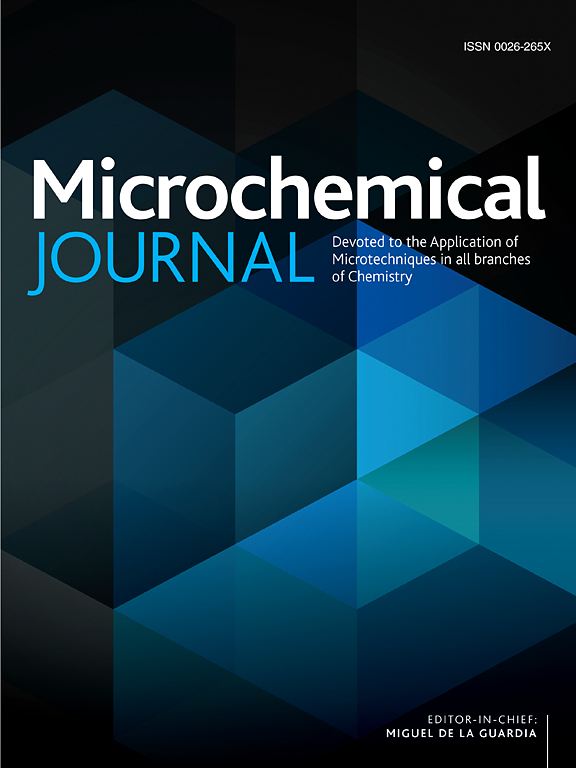Bimetallic zeolitic imidazolate frameworks-derived bar-shaped structure for electrochemical determination of H2O2
IF 4.9
2区 化学
Q1 CHEMISTRY, ANALYTICAL
引用次数: 0
Abstract
Unique nanostructures of bimetallic materials derived from zeolitic imidazolate frameworks (ZIFs) are promising candidates for electrochemical sensor applications. In this study, different bimetallic bar-shaped ZIFs (B-ZIFs) were synthesized by replacing some cobalt ions with different metals ions (Ni2+, Ce2+, Cu2+, Mn2+, or Fe3+). Then their derivatives were prepared via carbonization, respectively. Upon conducting thorough material characterizations and assessment of the electrochemical properties, the most suitable candidate for electrode modification was identified as bar-shaped Co/Cu-based carbon materials (B-Co/Cu/Cs). This choice facilitated the construction of an innovative electrochemical sensor tailored for the determination of H2O2. The furnished B-Co/Cu/Cs-based sensor showed good linearity for H2O2 analysis within concentrations ranged from 0.5-4000 μM and 4000–11000 μM, with a detection limit of 0.44 μM. All these results suggested that the prepared material would be a competitive candidate for the non-enzymatic H2O2 sensing.

求助全文
约1分钟内获得全文
求助全文
来源期刊

Microchemical Journal
化学-分析化学
CiteScore
8.70
自引率
8.30%
发文量
1131
审稿时长
1.9 months
期刊介绍:
The Microchemical Journal is a peer reviewed journal devoted to all aspects and phases of analytical chemistry and chemical analysis. The Microchemical Journal publishes articles which are at the forefront of modern analytical chemistry and cover innovations in the techniques to the finest possible limits. This includes fundamental aspects, instrumentation, new developments, innovative and novel methods and applications including environmental and clinical field.
Traditional classical analytical methods such as spectrophotometry and titrimetry as well as established instrumentation methods such as flame and graphite furnace atomic absorption spectrometry, gas chromatography, and modified glassy or carbon electrode electrochemical methods will be considered, provided they show significant improvements and novelty compared to the established methods.
 求助内容:
求助内容: 应助结果提醒方式:
应助结果提醒方式:


